|
|
|
|
|
|
|
Achi-Kochi Japan
Showing many places to visit and foods to eat in Japan
|
|
|
|
|
|
|
|
|
|
|
|
|
Japan
> Kanto region
> Mito
|
|
|
|
|
|
|
Mito
Ibaraki Pref., Kanto ( Achi-Kochi Japan )
|
|
|
|
|
|
|
|
|
|
|
|
|
( "Achi-Kochi" in Japanese means "Here and there" in English. )
Mito City, Ibaraki Pref., Kanto
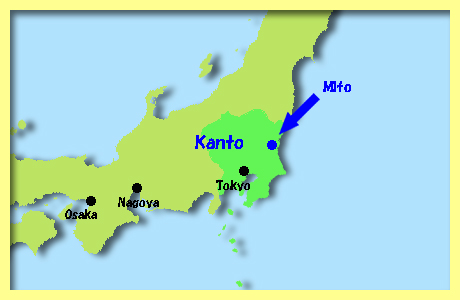
Mito ( above ) is the capital city of Ibaraki Prefecture, which is located in the northeast of Kanto region. The city used to be the center of Mito Feudal Domain through the 17th-19th century. The feudal lords of the domain were Yorifusa Tokugawa, a son of Ieyasu Tokugawa and Yorifusa's descendants. In Mito, there are many places related to the history of the feudal domain.
|
|
Monument of Natto
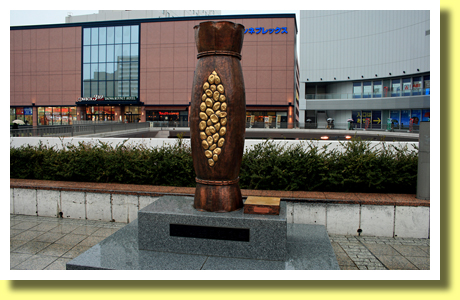
It takes a few hours to go from Tokyo to Mito by JR ( Japan Railway ) trains. When visitors get out of JR Mito station, the first thing they find could be the above - Not the statue erected to a governor nor a mayor, nor a feudal lord, but the monument of Natto. Yes, Mito is the capital city of Natto in Japan, I believe. Natto is one of traditional and popular local specialty foods.
|
|
Boiled Beans and Straw
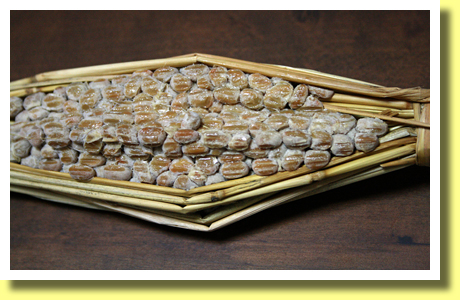
Anywhere in Japan it is easy to buy Natto in supermarkets where Natto is sold in small polystyrene containers. However Natto used to be sold in rice straw as above decades ago. Though there are some theories as for the origin of Natto, many believe that boiled soybeans were fermented in rice straw to produce Natto. Rice straw provides boiled soybeans with Natto-Kin bacterium ( Bacillus subtilis ).
Though Natto is a traditional Japanese food, about 30 percent of Japanese people do not like Natto, maybe because of unique odor, distinctive flavor and/or stringy texture. However there are many who can not start a day without Natto. In such a sense, Natto resembles the strongest cheese.
|
|
Natto and Sashimi
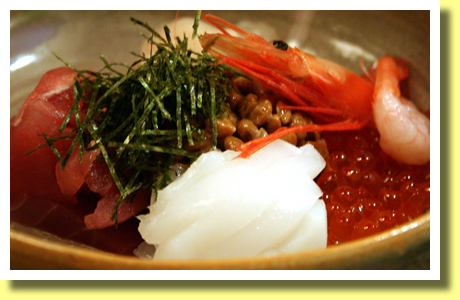
In Mito, there are many restaurants which serve various Natto dishes such as the above - Natto and sashimi ( tuna, squid, salmon roe and shrimp ). There are many more kinds of Natto dishes including Natto spring roll, Natto tempura, Natto with sardine, Natto omelette, Natto kamameshi and so on.
|
|
Kairaku-en

Kairaku-en, a Japanese garden located in Mito, is very famous and popular in Japan as well as Koraku-en ( Okayama ) and Kenroku-en ( Kanazawa ). In Kairaku-en, there are a few thousands of "Ume" ( plum ) trees. So here visit lots of tourists especially in spring, the season ( late February - March ) of plum blossoms ( above ). Kairaku-en was built in A.D.1841 by Nariaki Tokugawa, a feudal lord.
|
|
Kobun-tei
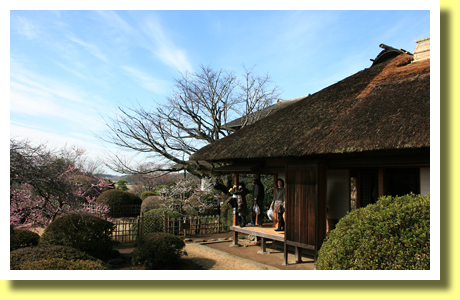
In Kairaku-en, there is a traditional building named "Kobun-tei" ( above ), which was designed by Nariaki Tokugawa himself in A.D.1840. Kobun-tei affords a fine view of Kairaku-en. After most of the building was burnt down by the air raid in A.D.1945, the reconstruction was completed in A.D.1958.
|
|
Okugoten and Fusuma-e

When Okugoten ( the private quarters ) of Kobun-tei was burnt down by the lightning in A.D.1969, Fusuma-e ( paintings on sliding paper doors ) were carried out and escaped from the fire. So Okugoten and Fusuma-e have been and are restored as above.
|
|
Kodo-kan
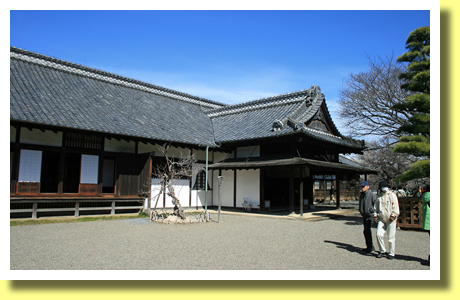
In A.D.1841 Nariaki Tokugawa, the feudal lord, establised Kodo-kan, Mito Domain School. The above building is one of the three designated National Important Cultural Properties of Kodo-kan.
His samurai retainers were expected to learn and study Confucianism, history, military arts, medicine, mathematics, astronomy and music in Kodo-kan.
|
|
Shizen-do
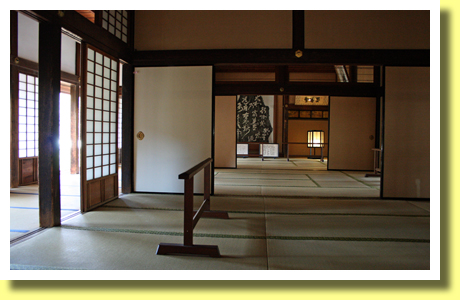
The above shows the inside of Shizen-do ( above ), another one of designated National Important Cultural Properties of Kodo-kan.
Yoshinobu Tokugawa, a son of Nariaki Tokugawa, started learning in Kodo-kan when he was 5 years old. Yoshinobu became the 15th and last shogun of Tokugawa shogunate. However in A.D.1867 he gave up the political power to the Emperor.
When Meiji Government sent a large force to Edo ( now Tokyo ) in A.D.1868, Yoshinobu gave up Edo-jo Castle ( now Kokyo - the Imperial Palace ) to the enemy force and confined himself to Shizen-do where he had learnt as a child. Finally he retired and moved to Shizuoka.
|
|
Anko ( Angler Fish )
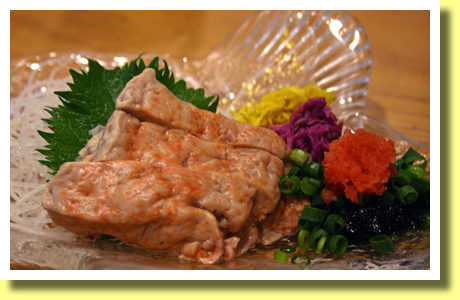
If staying in Ibaraki Prefecture in October-March, it is recommended to eat Anko ( Angler Fish ) dishes, one of traditional Japanese seafoods especially in the prefecture. There are various dishes of Anko such as ankimo ( liver - above ), hot pot, rice porridge, deep-fried, vinegared and so on.
|
|
Souvenir
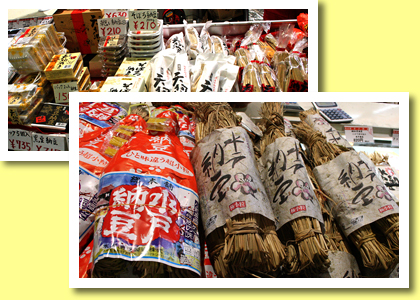
In shops in and around JR Mito staion, tourists would find various Natto products as above - some sold in rice straw containers, some in polystyrene containers, dried ones, Natto potato crisps, Natto candies and so on. Among the above, tourists could find favorite souvenirs.
|
Copyright (c) 2021 Achi-Kochi Zanmai Co., Ltd.
|